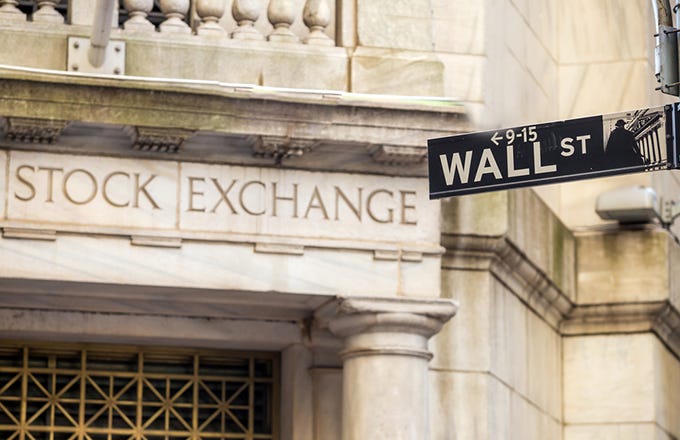|

|
By Richard Loth (Contact | Biography)
"The history of the stock and bond markets shows that risk and reward are inextricably intertwined. Do not expect high returns without high risk. Do not expect safety without correspondingly low returns." -William Bernstein, "The Four Pillars of Investing" (2002)
Investment research studies throughout the years have confirmed that the general investing public, or non-professional investors, have a pronounced tendency to focus on an investment's return. While risk is not necessarily ignored, it certainly seems to play second fiddle to return in most individual investors' decision-making processes.
As applied to mutual funds, you will learn the importance of the risk-return relationship in selecting quality mutual funds. In addition, we will explain the importance of understanding the concept of total return, which is the key component of a fund's investment performance. (For more insight, read Determining Risk And The Risk Pyramid.)
We'll also identify an discuss the significance of a favorable risk-return profile as one of the more valuable investment qualities to be considered in selecting a mutual fund.
In the investing world, there are a number of highly technical, sophisticated metrics that are used to measure investment risk-return. The most commonly used of these indicators include alpha, beta, r-squared, standard deviation and the Sharpe ratio. (For background reading, see Five Stats That Showcase Risk.)
Calculating and Interpreting Risk Measurements
It is safe to say that few, if any, non-professional investors, have the faintest idea how to calculate and/or interpret these measurements. That is the so-called bad news. The good news is that Morningstar and Value Line fund reports do all the statistical analysis for us and provide easy-to-understand risk and return evaluations. Essentially, these come in five different varieties: high, above-average, average, below-average, and low, or words to that effect.
It is a universally accepted principle of investing that risk and return are commensurate. This fancy terminology simply tells us that the level of risk determines the level of return. As a result, it is unusual that a low-risk investment will produce a high return. Of course, the inverse of this relationship is also true.
Asset Allocation and Diversification
Prior to selecting individual mutual funds, or any other investment, for a portfolio, an investor should decide on an appropriate asset allocation. For the sake of this discussion, let's say that a moderate 60% stock and 40% bond apportionment is made. Diversifying within these allocations then requires that the investor select investments (funds, stocks, and/or bonds) that are complementary this moderate risk-return investing strategy. (For more insight, see Achieving Optimal Asset Allocation.)
Risk is an inherent part of investing. In order to get a reasonable return on an investment, risk has to be present. A riskless asset will produce little or no return. The intelligent investor manages risk by recognizing its existence, measuring its degree in any given investment and realistically assessing his or her capacity to take risk. There is nothing wrong with investing in a high-risk fund if the fund's return is equally high. The questions to ask are: Can I afford the loss if it occurs? Am I emotionally prepared to deal with the uncertainties of high-risk investments? Do I need to take this kind of risk to achieve my investment goals? (To help answer these questions, read Personalizing Risk Tolerance.)
A prudent investor will seek to match and/or offset risk by assembling a reasonable number of mutual funds with favorable risk-return profiles in a diversity of fund categories. This is done by first identifying a mix of mutual funds according to company size (market-cap), investing style (value, growth, and blend) and asset allocation (stock and bond). By choosing from these funds, you can find those that are characterized as having returns that exceed their risks, or at least match them. This would represent a favorable risk-return profile, or spread, and is a key fund investment quality.
Return to the Main Menu.
Understanding Mutual Fund Returns
"The history of the stock and bond markets shows that risk and reward are inextricably intertwined. Do not expect high returns without high risk. Do not expect safety without correspondingly low returns." -William Bernstein, "The Four Pillars of Investing" (2002)
Investment research studies throughout the years have confirmed that the general investing public, or non-professional investors, have a pronounced tendency to focus on an investment's return. While risk is not necessarily ignored, it certainly seems to play second fiddle to return in most individual investors' decision-making processes.
As applied to mutual funds, you will learn the importance of the risk-return relationship in selecting quality mutual funds. In addition, we will explain the importance of understanding the concept of total return, which is the key component of a fund's investment performance. (For more insight, read Determining Risk And The Risk Pyramid.)
We'll also identify an discuss the significance of a favorable risk-return profile as one of the more valuable investment qualities to be considered in selecting a mutual fund.
In the investing world, there are a number of highly technical, sophisticated metrics that are used to measure investment risk-return. The most commonly used of these indicators include alpha, beta, r-squared, standard deviation and the Sharpe ratio. (For background reading, see Five Stats That Showcase Risk.)
Calculating and Interpreting Risk Measurements
It is safe to say that few, if any, non-professional investors, have the faintest idea how to calculate and/or interpret these measurements. That is the so-called bad news. The good news is that Morningstar and Value Line fund reports do all the statistical analysis for us and provide easy-to-understand risk and return evaluations. Essentially, these come in five different varieties: high, above-average, average, below-average, and low, or words to that effect.
It is a universally accepted principle of investing that risk and return are commensurate. This fancy terminology simply tells us that the level of risk determines the level of return. As a result, it is unusual that a low-risk investment will produce a high return. Of course, the inverse of this relationship is also true.
Asset Allocation and Diversification
Prior to selecting individual mutual funds, or any other investment, for a portfolio, an investor should decide on an appropriate asset allocation. For the sake of this discussion, let's say that a moderate 60% stock and 40% bond apportionment is made. Diversifying within these allocations then requires that the investor select investments (funds, stocks, and/or bonds) that are complementary this moderate risk-return investing strategy. (For more insight, see Achieving Optimal Asset Allocation.)
Risk is an inherent part of investing. In order to get a reasonable return on an investment, risk has to be present. A riskless asset will produce little or no return. The intelligent investor manages risk by recognizing its existence, measuring its degree in any given investment and realistically assessing his or her capacity to take risk. There is nothing wrong with investing in a high-risk fund if the fund's return is equally high. The questions to ask are: Can I afford the loss if it occurs? Am I emotionally prepared to deal with the uncertainties of high-risk investments? Do I need to take this kind of risk to achieve my investment goals? (To help answer these questions, read Personalizing Risk Tolerance.)
A prudent investor will seek to match and/or offset risk by assembling a reasonable number of mutual funds with favorable risk-return profiles in a diversity of fund categories. This is done by first identifying a mix of mutual funds according to company size (market-cap), investing style (value, growth, and blend) and asset allocation (stock and bond). By choosing from these funds, you can find those that are characterized as having returns that exceed their risks, or at least match them. This would represent a favorable risk-return profile, or spread, and is a key fund investment quality.
Return to the Main Menu.
Understanding Mutual Fund Returns
Related Articles
-
 Investing
InvestingA Fund's Investment Objective
Learn to evaluate a fund's investment objective, or "style". -
 Investing
InvestingUnderstanding Volatility Measurements
Learn how to choose a fund with an optimal risk-reward combination. Find more information about standard deviation, beta, and more. -
 Investing
InvestingMutual Fund Investment Quality: Conclusion
Check in here for an overview of mutual fund investment quality and how to find it. -
 Financial Advisor
Financial AdvisorThe Step by Step Portfolio Planning Process
Portfolio planning has never been more important or more daunting for investors. Find out the steps involved in the portfolio planning process. -
 Investing
InvestingScoring Fund Investment Quality
Learn some background on mutual funds and what factors can be used to assess their investment quality. -
 Investing
InvestingHow Much Company Stock Can a Mutual Fund Own?
There is no written rule that stipulates how much of a company a mutual fund can own. -
 Investing
InvestingEvaluating Bond Funds For Performance and Risks
Discover some of the key factors for determining a bond fund's risk-return profile and its relative performance. Understanding these metrics are important. -
 Investing
InvestingImpact Investing: Improve the World and Your Portfolio
Socially responsible investing allows you to make a difference in the world or your community while potentially improving your portfolio.


